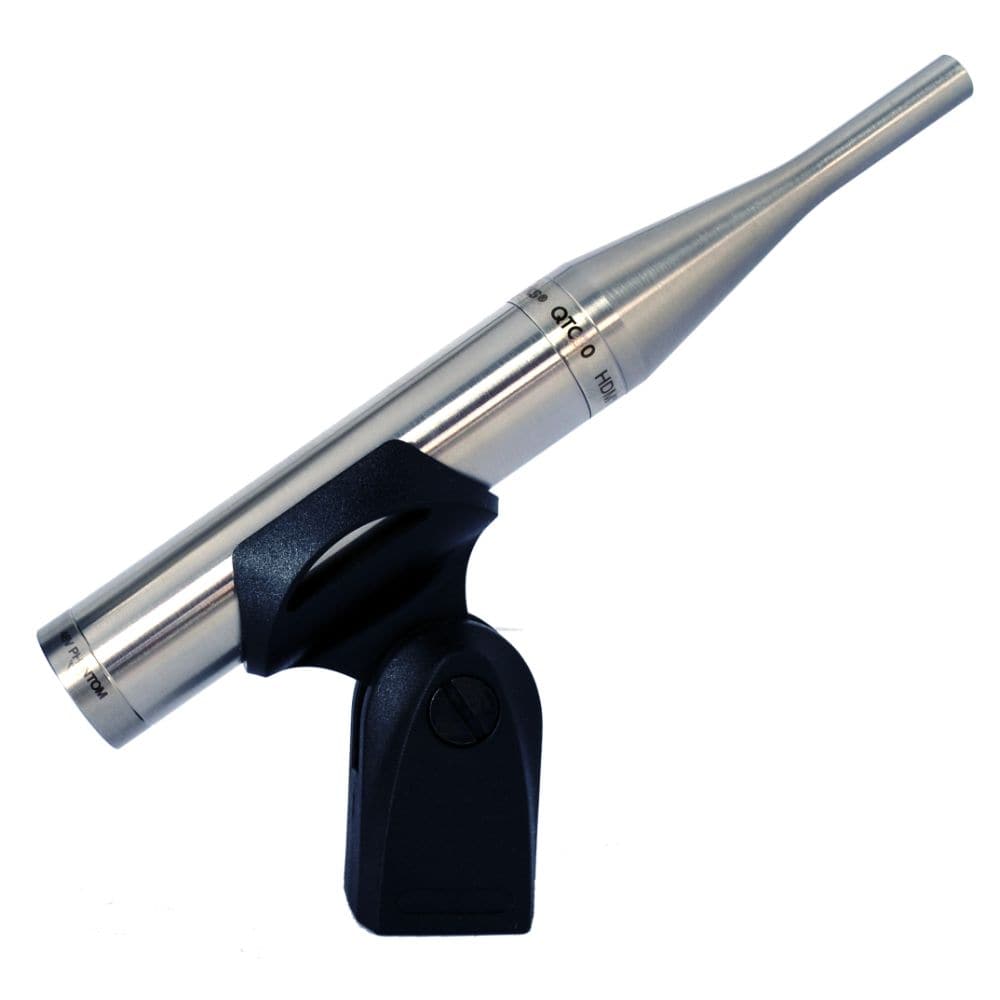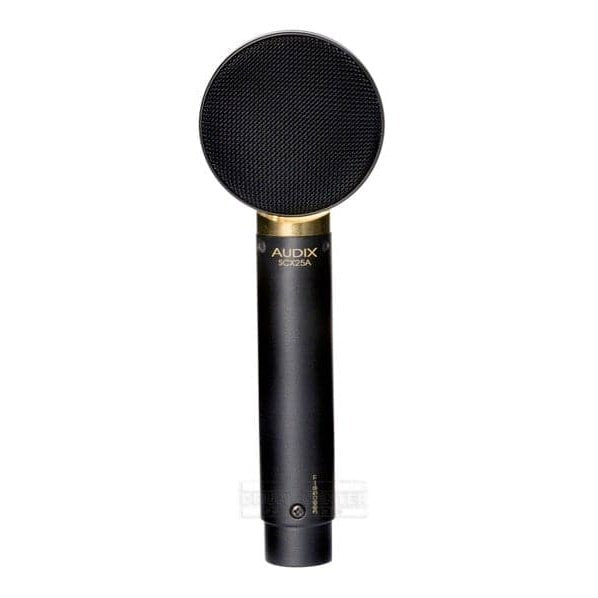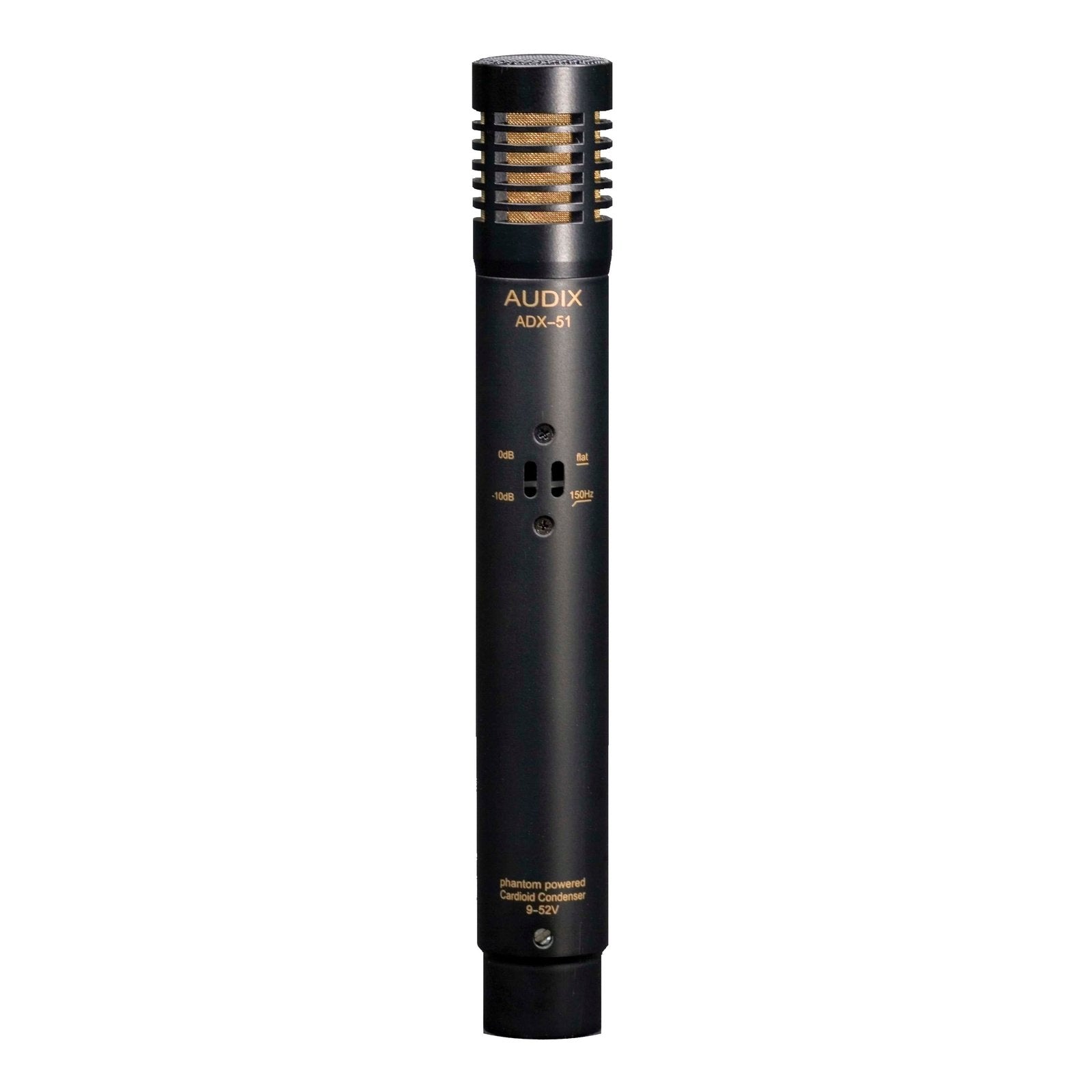Whether in the studio or on stage, you need a dedicated overhead drum mic. It’s not just that you want the listeners to hear you—other musicians rely on hearing your beats so that they can stay on rhythm.
There are many different brands that provide overhead drum mics and several individual overhead mics to choose from—understandably, it can all be a bit overwhelming. Whether you’re a newcomer to drumming or even just someone who had to step away from drumming for a bit, you’ll quickly realize there have been significant developments in drumming and sound-focused technology.
Fortunately, you don’t have to attempt to navigate the vast array of drum mics alone! Our experts at Drum Center of Portsmouth have done the work for you to simplify your buying experience.
Here are the three best overhead drum mics, along with tips on choosing the best one for your percussion needs.
1. Earthworks QTC30 Small-diaphragm Condenser Microphone

This microphone, brought to you by Earthworks, is a 30kHz omnidirectional polar microphone. It delights its purchasers by capturing a detailed, accurate representation of the original sounds. It does this by having a pattern that is uniform across the breadth of the frequencies. The result? A beautiful overhead mic that projects incredibly detailed recordings.
Additionally, the stylistic design of this microphone gives it a distinctive look. It is chromatically and aesthetically different from the other two items highlighted here.
Unlike the other purchases on this list, this particular microphone purchase does not come with extra accessories.
PROS
- Authentic sound capture—This microphone captures how you sound when drumming. It is fantastic at capturing sounds recorded in quiet rooms, making it an exceptional tool for recording songs, sound mixing, and songwriting!
- No proximity effect—If you need to record up close and personal, this microphone is the choice. It lacks a proximity effect, the auditory phenomenon that causes low-frequency responses to increase as a microphone moves closer to a sound’s source. This mic can handle up to 140dB, so you can get as up close as you want.
- Versatile use—The detailed sound capture means it performs beautifully not just for drums but string instruments, vocals, piano, and more. You and your whole band can share this investment!
CONS
- Not great for loud environments—The mic is perfect in close settings but not as reliable in loud ones. You’ll be better off using it in the studio, in smaller venues, or in bands with fewer loud instruments.
- No distortions—Certain types of songs and music may benefit from proximity effects and other sound distortions. This microphone’s inability to create those distortions is a factor to consider when deciding whether or not to purchase it.
Summary
This specialty microphone performs at its best in highly controlled circumstances. When used in appropriate conditions, it is spectacular and reliable. It ensures listeners hear the highest possible sound quality to remarkable effect. Use it to capture sound during musicals, studio recording, and other situations where you want to listen to every exquisite detail. You’ll love everything about this sleek microphone and exceptional acoustic quality.
The Earthworks QTC30 Small-diaphragm Condenser Microphone is a microphone that is handcrafted and designed for recording rooms, orchestral symphonies, theaters, and other elegant scenes. You won’t be disappointed, and with the high-end quality, you can expect this overhead drum mic to last for years.
2. Audix SCX25A Microphone (Studio Condenser)

The Audix SCS25A is an elegantly designed studio condenser microphone. This shock-mounted device minimizes acoustic reflections, so when you listen to it, you can thrill in pure, open-air sound.
The “Lollipop” microphone by Audix also comes with a DClip Mic Clip, a Casewood foam-lined wooden case, and a metal adapter to accommodate ⅜” Mic Stands.
PROS
- Pure, untampered sound—By utilizing a shock-mounted, intricate machined brass ring, the actual capsule of the microphone is isolated from the rest of the body and electronics. The design makes it so that there are minimal acoustic reflections and diffractions. It’s what allows the SCX25A to capture and deliver an exceptionally detailed and realistic open-air sound.
- Wide variety of applications—This microphone is fantastic in many circumstances owing to its nature to create the best open-air experience possible. Drummers, pianists, choirs, studio lead vocalists, and sound engineers all love it, attesting to its versatility.
- Blends beautifully—The wide cardioid polar pattern on this microphone will make you the sound engineer’s best friend. It blends sounds beautifully with the environment.
CONS
- Proximity effect—Unlike the Earthworks QTC30 Small-diaphragm Condenser, this microphone does experience a proximity effect. It’s a special consideration to make when positioning the microphone if you want to capture the most authentic sound possible.
- Not for closed environments—Despite its nature as a studio condenser microphone, this particular microphone is designed for real-world or non-isolated circumstances. If you want a conventional studio condenser, you may find this microphone’s specifications unsuited to your needs.
Summary
This microphone is a high-tech instrument designed with the latest acoustic technology and theory in mind. It will faithfully capture and recreate sounds. By utilizing the best audio technology, the SCX25A consistently responds to on and off-axis signals. You’ll be amazed at how much it can capture sounds at an impressive distance and from varying angles! It produces pure, authentic sound like you might get from an open-air environment. Plus, you can blend the sound as it captures the other sounds of other nearby instruments vocalists.
All in all, this is an exceptional product for drummers in the real world. You can use it to ensure a listening experience that feels live. No more stress of seeing listeners struggle to hear your playing competing with other instruments and audience noises—the SCS25A delivers a remarkable listening experience. It’s not just those with the luxury to be able to stop and listen! With it, even the busiest body will be able to appreciate your music!
3. Audix ADX51 Microphone

Audix designed the ADX51 Microphone to be an overhead microphone, which means that every component of this item has received exceptional attention to detail.
It can capture a range of sounds from various types of drums such as cymbals, hi-hats, and more. It can even expertly capture music from other instruments to blend the resulting sound seamlessly. And if needed, it can isolate the drums and highlight them to give extra attention to your drumming artistry.
The ADX51 includes attachments and accessories, such as a switchable-10 Db Pad and a 150 Hz Bass Roll-Off.
PROS
- Designed with overhead use in mind—not all microphones are, even when marketed as such. The ADX51 comes with features that maximize its overhead ability, including the switchable -10 Db Pad, which increases the scenarios it can record.
- Multiple accessories—This particular overhead microphone includes a number of accessories, such as a windscreen for noise filtration and to block outside noises.
- Outstanding value—This is one of the most affordable overhead mics you’ll find anywhere. And for the performance that’s nearly on par with Audix’s higher-end SCX25A, it’s a steal.
CONS
- Phantom power construction—Unlike any of the other microphones here, this particular device comes with a very unusual requirement; it needs 18-52 V Phantom Power. The term “Phantom Power” means the microphone gets its power through voltage on the same wires that carry audio signals. In the case of the Audix ADX51 Microphone, it needs a DC voltage of 18-52 volts.
- Limited applications—Due in part to the unique needs of the Audix ADX51 Microphone, it has more limited applications than the other mics we’ve reviewed here. It might not be the best for the studio or an orchestra, but it still does the job without fail.
Summary
This microphone is best for live-play situations such as a concert or practice. Rather than focusing on the specific and fantastical conditions created in a concert hall or other acoustically designed scenario, Audix has created a microphone that musicians can use in more everyday circumstances.
Drummers will find it a reliable backup in a range of circumstances that require both close-range and long-range sound capture. Maybe the only drawback is the phantom power construction because you don’t get the isolated acoustics as you do with Audix’s sophisticated SCX25A. But for the price, this microphone will ensure your audience has an enjoyable listening experience. It’s the part you need to make sure your fans get what they came to hear!
What to Look for When Buying Drum Overhead Mics
Buying an overhead drum mic is not the same as getting a standard microphone. Here’s what you need to look for on your journey:
What Makes a Great Drum Overhead Mic?
The best overhead microphone for a drum is one that is well-suited to your circumstances as a drummer. While any number of characteristics can make a drum’s overhead microphone a fancy piece of equipment, you are better off focusing on your specific rather than selecting an overhead microphone to use in any situation.
The reason for this is that your needs change depending on your situation. Someone in a recording booth, for instance, might want a microphone that lacks a proximity effect. They may prefer to be close to the microphone record.
In contrast, a musician who might need a fatter sound might benefit from the proximity effect! Entire music genres have grown out of knowing how to control distortions.
Careful consideration of your needs is essential to selecting the best overhead mic.
Why Are Matched Microphones Important for Overhead Drums?
The main benefit of matching pairs of microphones for overhead drums is consistent sound quality. While having different microphones might sound interesting in theory, it can detract from the sound quality and listeners’ experience.
Matching microphones ensure consistent sound quality so that performers can be confident their audiences are hearing the sounds as the musicians intended.
How Many Overhead Mics Does a Drum Have?
The standard for most drummers is to have a pair of overhead microphones to capture the full drum kit. However, different recording techniques might utilize varying numbers of overhead microphones.
Another common arrangement is to have three mics, one above the snare, one on the floor to the side of the floor tom, and the third on the kick drum.
Some drum sets used as many as eight separate microphones! However, not every microphone is an overhead microphone.
Where Do Overhead Mics Go On Drums?
Generally speaking, drummers place a pair of overhead microphones over their heads, hence the name. However, the spacing also depends on your needs.
Usually, performers will place the microphones a few feet away from the drumkit so that they can capture the “stereo image” or the full range of how music and other sounds. If you want a balanced sound, it’s best to position them higher above you. However, if you want to enhance a part, such as the cymbals, you can place them lower. Placing the mics behind your head will dampen the cymbal sound and heighten the skins.
Since the drum parts are at varying heights, you can also place the microphones at different heights. That way, the acoustic arrival times will be even.
The snare also plays a critical role in positioning the overhead mic. Typically, you’d want to place it approximately 32” from the snare. It’s essential to keep both mics equidistant from the snare.
Conclusion
Overhead microphones are vital equipment, and the right one can utterly transform the acoustic experience. Whether you’re playing a concert for thousands of fans or a simple jam session with your bandmates, the mic can make the performance.
The different kinds of overhead microphones on the market can make navigating the marketplace a confusing and frustrating experience for even an experienced drummer, which is why we sought to make it at least a little bit easier.
With this guide, you can browse while armed with the knowledge needed to make the best overhead drum mic purchase for you! Remember that your playing needs should be front and center in guiding your purchase.
Shop overhead mics, drum snares, and more at Drum Center of Portsmouth!

